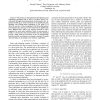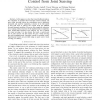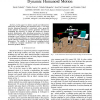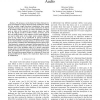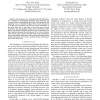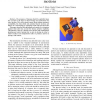IROS
2006
IEEE
14 years 5 months ago
2006
IEEE
— We present an interpolation-based planning and replanning algorithm that is able to produce direct, lowcost paths through three-dimensional environments. Our algorithm builds u...
IROS
2006
IEEE
14 years 5 months ago
2006
IEEE
— In this paper, we show that visual feedback reduces the complexity of parallel robot Cartesian control. Namely, 3D pose visual servoing, where the end-effector pose is indirect...
IROS
2006
IEEE
14 years 5 months ago
2006
IEEE
— In this paper we address smooth and collision-free whole-body motion planning for humanoid robots. A two-stage iterative planning framework is introduced where geometric motion...
IROS
2006
IEEE
14 years 5 months ago
2006
IEEE
IROS
2006
IEEE
14 years 5 months ago
2006
IEEE
Abstract— We propose a new vision-based SLAM (Simultaneous Localization and Mapping) technique using both line and corner features as landmarks in the scene. The proposed SLAM al...
IROS
2006
IEEE
14 years 5 months ago
2006
IEEE
- Monte Carlo localization is known to be one of the most reliable methods for pose estimation of a mobile robot. Many studies have been conducted to improve performance of MCL. Al...
IROS
2006
IEEE
14 years 5 months ago
2006
IEEE
— Autonomous service robots have to recognize and interpret their environment to be able to interact with it. This paper will focus on service tasks such as serving a glass of wa...
IROS
2006
IEEE
14 years 5 months ago
2006
IEEE
— The presence of humans should be explicitly taken into account in all steps of robot’s design and particularly for robot motion. The robot should reason about human partner�...
IROS
2006
IEEE
14 years 5 months ago
2006
IEEE
— Human interaction with a service robot requires a shared representation of the environment for spoken dialogue and task specification where names used for particular locations...
IROS
2006
IEEE
14 years 5 months ago
2006
IEEE
– This paper describes a fusion of panoramic vision and laser range data to track multiple persons simultaneously from a stationary robot. Particle filters are used to track peop...
